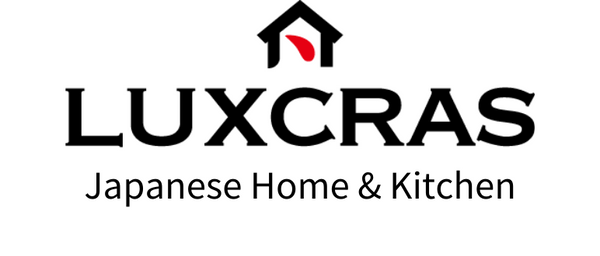
History of Ukiyo-e
Ukiyo-e is an art form that flourished in Japan between the 17th and 19th centuries. This unique art form was produced as woodblock prints and is deeply rooted in Japanese culture and history. We will tell you about Ukiyo-e in a way that is easy to understand for people outside of Japan.
The birth of Ukiyo-e dates back to the early Edo period. At that time, Edo (present-day Tokyo) was experiencing prosperity and the culture of the common people was developing. During this period, there was a growing interest in paintings and works of art among the common people in urban areas.
Ukiyo-e was created to meet such demand from the common people. In the early days, Ukiyo-e was produced mainly by a process in which an engraver engraved pictures drawn by an artist onto woodblocks, and a printer finished the woodblocks as prints. This technique enabled the efficient production and distribution of a large number of works, which were widely enjoyed by the public.
In the early days, ukiyo-e was dominated by pictures depicting warriors and upper-class people in the Warring States period. However, as demand among the general public eventually increased, ukiyo-e began to depict themes such as daily life, landscapes, and kabuki plays. In particular, Ukiyo-e depicting the lives of common people in urban downtowns and pleasure quarters became very popular.
Ukiyo-e was also enjoyed as a form of entertainment by the common people of the time. Ukiyo-e was sold at outdoor stalls and festivals of temples and shrines by print printers, who made it easy for people to enjoy Ukiyo-e. As a result, Ukiyo-e became more widespread and permeated people's lives.
In the 18th century, the golden age of Ukiyo-e was ushered in with the emergence of such outstanding ukiyo-e artists as Katsushika Hokusai and Utagawa Hiroshige. Hokusai is known for his original works based on landscapes and mythology. Hokusai's most famous work is "Fugaku Sanjurokkei” (Thirty-six Views of Mount Fuji). Hiroshige painted beautiful landscapes in his famous series "Fifty-three Stages of the Tokaido”.

Fugaku Sanjurokkei (Thirty-six Views of Mount Fuji) is a group of works featuring Japan's highest mountain, Mt. Fuji, and includes world-famous works such as "Kanagawa Okinonamiura". Hokusai depicted Mt. Fuji from many different angles, beautifully expressing its beauty and majesty. His works are also known for their unique sense of color and powerful brushwork.

On the other hand, "Fifty-three Stations of the Tokaido" is a group of works on the theme of the 53 stops on the Tokaido, known as the Fifty-three Stations of the Tokaido, and is attractive for the delicate brushwork and beautiful colors of Hiroshige's work. While Hiroshige depicted the Japanese landscape realistically, he also added his unique interpretation to enhance its beauty, which captivated viewers.
These works are loved by people around the world for their beauty and artistic value. These works are also important sources for understanding how Ukiyo-e depicted the Japanese landscape and culture.
The Appeal of Ukiyo-e
Ukiyo-e is a traditional Japanese art form whose appeal is appreciated throughout the world.
The greatest appeal of Ukiyo-e is its beautiful colors. The vivid colors bring to life the four seasons, landscapes, and people's lives in Japan, attracting the viewer's attention. In addition, the intricately detailed designs celebrate the skill and creativity of the artists.
Furthermore, Ukiyo-e reflects the culture and history of Japan and fascinates with its unique themes. From Kabuki to traditional Japanese festivals and beautiful natural landscapes, Ukiyo-e conveys Japanese customs and aesthetics through a variety of subjects. On the other hand, Ukiyo-e depicting the lives of ordinary Japanese people are also valuable materials that provide a glimpse into the historical background and social structure of the times.
One of the charms of Ukiyo-e is its unique style and technique. Produced as woodblock prints, Ukiyo-e was the result of the collaborative work of artisans. The artist painted the picture, the engraver made the woodblock, and the printer transferred the picture onto the woodblock. This process was an efficient way to bring a single work of art to a large number of people and contributed greatly to the popularization of Ukiyo-e as part of popular culture.
Overseas Influence of Ukiyo-e
Ukiyo-e had a significant impact on art overseas. The influence of Ukiyo-e was particularly pronounced in the 19th and early 20th centuries. At that time, Japan opened its doors to the West after its isolation policy, and exchanges with the West progressed. During this period, Ukiyo-e had a great influence on Western artists.
First, let us mention its relationship with Impressionism. Impressionist painters were fascinated by and influenced by the unique colors and brushstrokes of Ukiyo-e. In particular, Ukiyo-e's influence can be seen in the expressive techniques pursued by Impressionist painters, such as the use of bright colors, free composition, and short depiction time.
Ukiyo-e also greatly influenced Art Nouveau. Art Nouveau was an art movement that flourished from the end of the 19th century to the beginning of the 20th century, characterized by works depicting images of nature, flowers, and women. These Art Nouveau designs incorporated decorative elements and delicate line drawings from Ukiyo-e.
In addition, Ukiyo-e gained popularity in the European art market. Ukiyo-e prints were actively exported by art dealers and collectors, and were highly valued in the foreign art market. As a result, Ukiyo-e gained international fame and is included in many collections.
Today, the influence of Ukiyo-e continues to spread. Many museums and galleries exhibit Ukiyo-e, and international artists are inspired by Ukiyo-e. Furthermore, the designs and motifs of Ukiyo-e are used in various fields such as fashion and interior design.
Today, Ukiyo-e is protected as a valuable cultural asset and exhibited in museums and galleries. Ukiyo-e techniques have also influenced contemporary artists, opening up new possibilities for expression.
Ukiyo-e has a special place in Japanese art history. Its unique style and diversity of themes symbolize the richness of Japanese culture and art. Please come and experience the fascination of Ukiyo-e with your own eyes.

